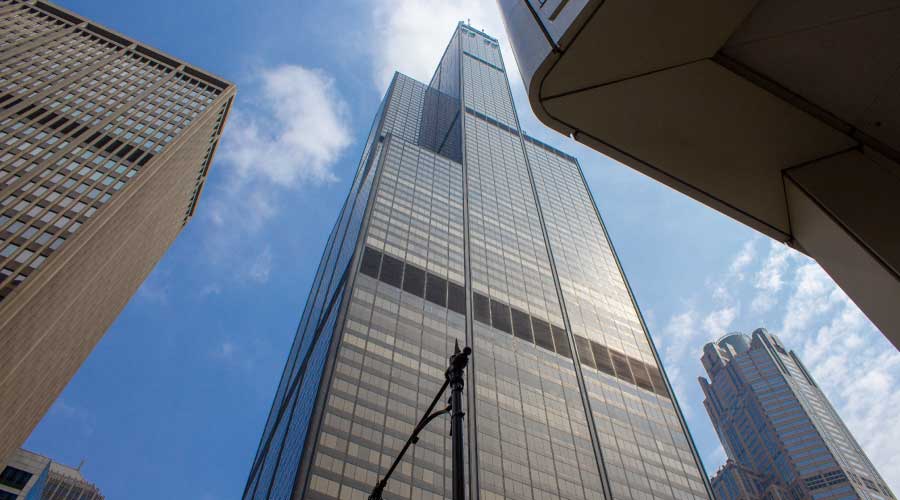How to Reposition Buildings to Meet Market Demands
Working with a trusted design team is a crucial step to making sure your building remains competitive.
By Doug West, Contributing Writer
As new-build, Class A skyscrapers come to market, the widely reported “flight to quality” is forcing older commercial buildings to evaluate their place in the conversation. A common response involves time-consuming and expensive infrastructure upgrades –– think new restrooms, windows, or elevator mods –– along with more immediate strategies like amenity spaces, fitness centers, and prebuilt programs. At its core, ownership teams need to find new ways to present existing buildings so that they exceed tenant expectations in this competitive commercial real estate market.
Building repositioning has long been a strategy used by commercial landlords to maintain their role in the market and remain current with the new offerings. By embracing innovative design principles and strategic branding initiatives, landlords can effectively position their properties as attractive, modern spaces that meet the evolving needs of tenants, thereby ensuring relevance and competitiveness in the ever-changing real estate landscape. To create the most competitive stack, building owners can lean on architects and designers to develop a comprehensive, strategic roadmap to elevate a building's profile.
Partner with a design team
Establishing a comprehensive design team enables a holistic approach to solutions. A strong team comprises key roles such as building ownership, leasing, architecture, design, engineering, code consultants, lighting, graphics, and furniture. Considered together, these elements inform the design solutions and suggestions for each space that will best serve the objectives of the building –– and sometimes, the success of a single space can inform where they go next.
A building’s architectural style and the built legacy of the surrounding neighborhood can be a great place to start. When developing a building’s identity, suggestions from ownership and leasing can be instrumental at this early decision point as the recommended solutions may vary. One approach is to blend the building’s exterior aesthetic and the neighborhood's character through design to create a strong sense of place. With other properties, location is a ‘counter-point’ in which the building is better positioned as an oasis of respite amidst the surroundings, deriving design from nature or natural materials.
Determining whole-building identities
By combining site, market, and community data designers can develop an overarching, strategic roadmap for boosting a building's profile. In some cases, this translates into the development of a whole-property identity, where the "brand" remains consistent throughout.
By considering every detail from the start, owners can create continuity between disparate settings like a prebuilt suite and the amenity floor. Thoughtful consideration of lighting and color palettes contributes to a consistent aesthetic and ensures a visual connection between different areas, ultimately crafting a unified and memorable identity for the property. Additionally, design accents should align with elements found in the building's lobby or match those found on the exterior, creating a seamless transition from the building's entrance to a space inside. This approach ensures that even the smallest corporate tenant feels as though they own the entire building.
The building at 575 Madison Avenue serves as one example of this approach. Here the design team was able to carry the design through the building's larger footprint — establishing a 575 Madison "DNA.” In the building’s prebuilt suites, gray-veined marble flooring, a slat wood ceiling system, and slatted wood paneling were incorporated to balance the cool base material palette with warmth. To create continuity among the property's unbranded spaces, our team framed the elevator lobby with a consistent slat wood ceiling system and slatted wood paneling, mirroring the welcoming features found in the building's prebuilt suite. The choice of a walnut herringbone floor, instead of marble, was intentional, serving as a visual cue to signify the transition in the amenity space's purpose. Following a similar, elegant-neutral aesthetic throughout, our team layered in additional elements that radiate a sense of warmth and hospitality, effortlessly blending style and comfort. From tenant spaces to the amenity terrace, elevator bays are framed in like materials and the tones and textures feel familiar across floors. This redesign and repositioning is working floors are leasing and the building is attracting new types of tenants.
Independently branded spaces
In other instances, these roadmaps can be more iterative, where different spaces across the building's stack have different "brands" and aesthetics. A jewel box space encourages a sense of discovery and invites a bit of playfulness, while also allowing the landlord to appeal to different tenant types or create different types of revenue streams. This strategy also gives tenants flexibility in how they use spaces like amenity floors, conferencing centers, or mid-stack "clubhouses."
How might they use it? At a recent project for a commercial real estate investment and advisory firm, the design team designed a lounge space that was different from the design palette found throughout the prebuilt standards. This independently branded space provides tenants with a moody space with dark walnut floors and fun wallpaper giving it its own distinct identity and branding separate from that of the building.
As the commercial real estate landscape continues to evolve with new high-end developments, established buildings must reposition themselves to stay competitive. While infrastructure and amenity upgrades are key, cultivating a distinctive identity is equal in importance. From partnering with designers and understanding local dynamics to creating whole-building identities and independently branded spaces, a comprehensive approach is needed to thrive in the ever-changing real estate landscape. Repositioning unlocks the potential to carve out a unique place in the market, meeting today's tenant needs and remaining competitive and adaptable in the future.
Doug West is Studio Creative Director at TPG Architecture.
Related Topics:












